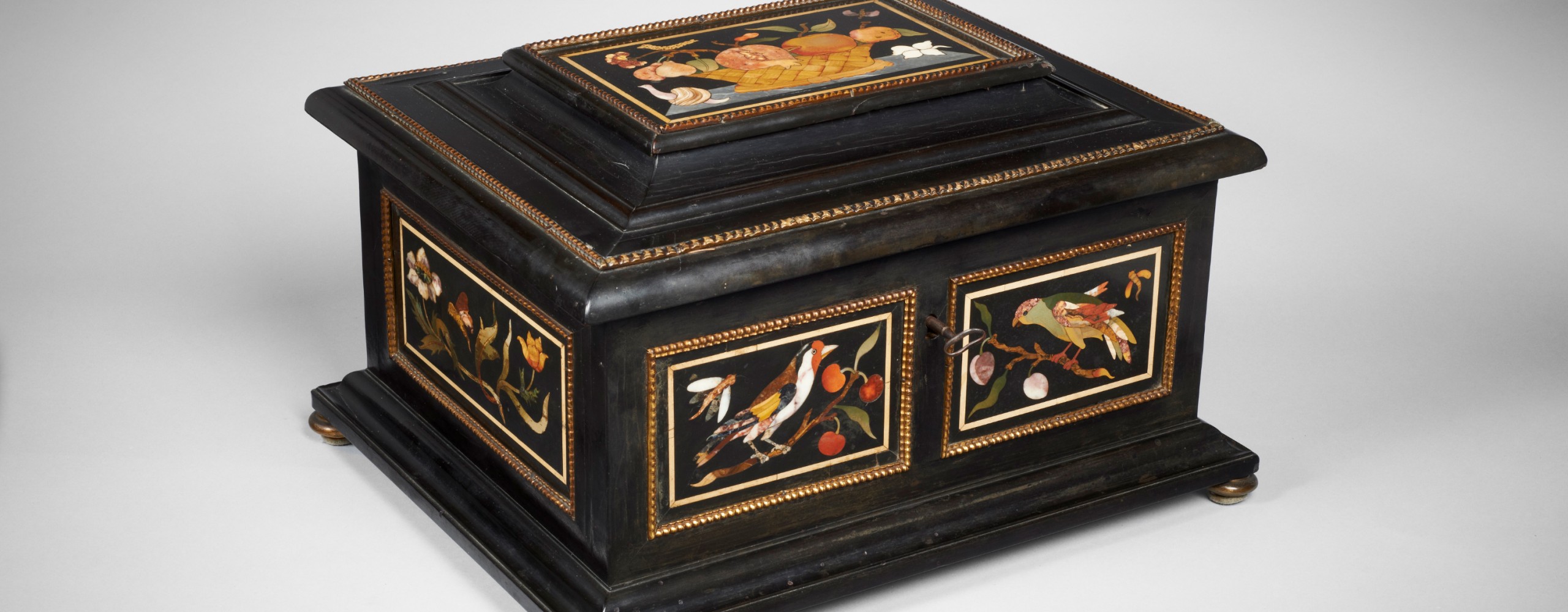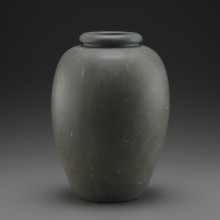
Watch and Listen
Commesso box
Combining precious materials with a marked colour contrast, this small box depicts various birds and plants with an economy of means typical of the creations of the Galleria dei Lavori, ancestor to the current-day Opificio delle Pietre dure, founded in Florence in 1588 by Ferdinando I de’ Medici. These productions perpetuate and transpose, on small objects, the Roman technique of opus sectile, used for polychrome marble paving.
Commesso box
Circa 1600-1650
Florence
Walnut frame, rosewood veneer, ebony, hard stone marquetry, and gilded metal
22 x 39.5 x 33 cm
FGA-AD-OBJ-0031
Narrated by Dr. Fabienne Fravalo, Curator of the decorative arts collection
This box decorated with marquetry panels of polychrome stones (commesso) is characteristic of the Florentine production of the 17th and 18th centuries, which reinterpreted the antique opus sectile technique.
Rather than geometric motifs, artisans favoured figurative elements: sometimes landscapes, inhabited by small figures, other times a range of animals, flowers and fruit baskets, like here, on the lid and side panels. The shimmering plumage of the birds and iridescent membranes of the insects subtly exploit the diversity of the chromatic effects offered by the stones’ nuances.
Exported across Europe, these panels were used to adorn furniture, cabinets and boxes, intended to house precious personal effects, and whose growing success accompanied the development of the concept of individual privacy.
Discover our newsletter
We just sent you a verification email. Please click the link in the email to complete the subscription process.


All rights reserved. Without authorization from ProLitteris, the reproduction and any use of the works other than individual and private consultation is prohibited.

